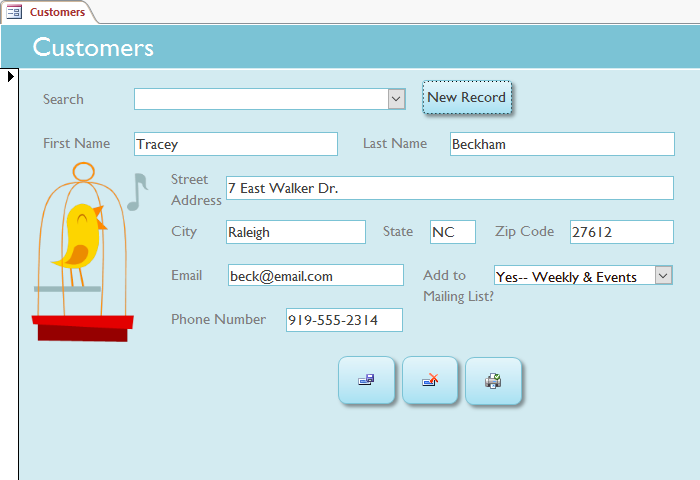Mastering Forms in Access 2016: Enhancing Data Entry and Interaction

Microsoft Access 2016 offers a robust suite of tools for database management, and at the forefront of user interaction lies forms. Forms provide a user-friendly interface for entering, viewing, and editing data, playing a vital role in streamlining data entry processes and enhancing user interaction with databases. Whether you’re a small business owner managing customer information or a researcher tracking experimental data, understanding how to work with forms in Access 2016 is essential for optimizing efficiency and productivity. In this extensive guide, we’ll delve deep into the intricacies of working with forms in Access 2016, covering everything from form creation to customization and beyond.
Understanding Forms in Access 2016
Before diving into the specifics of working with forms, it’s essential to grasp the concept of forms in Access 2016. Forms serve as a graphical user interface (GUI) that allows users to interact with data stored in tables. Unlike tables, which display raw data in a tabular format, forms provide a structured and user-friendly layout for data entry, viewing, and editing. Forms can include various controls, such as text boxes, buttons, drop-down lists, and navigation controls, to facilitate data entry and navigation.
Creating Forms
Creating a new form in Access 2016 is a straightforward process, thanks to the intuitive interface and powerful design tools. Users can choose from several methods to create forms, including:
- Form Wizard: Access 2016 offers a Form Wizard that guides users through the process of creating a form based on a selected table or query. The Form Wizard allows users to choose the fields they want to include in the form and customize the layout and appearance.
- Layout View: Layout View provides a flexible design environment for creating and customizing forms. Users can drag and drop controls onto the form, resize and rearrange them as needed, and adjust properties and formatting.
- Design View: Design View offers a more granular approach to form design, allowing users to create forms from scratch or modify existing forms with precision. Design View provides access to all form elements and properties, giving users full control over the form layout and functionality.
Customizing Forms
Once a form is created, users can customize it to meet their specific requirements and preferences. Access 2016 offers a wide range of customization options, including:
- Adding Controls: Users can add various controls to forms, such as text boxes, buttons, drop-down lists, and checkboxes, to facilitate data entry and interaction.
- Formatting: Access 2016 allows users to customize the appearance of forms by adjusting formatting options such as font size, color, and style. Users can also apply themes and styles to maintain consistency with other database objects.
- Adding Calculated Controls: Users can create calculated controls on forms to perform calculations based on data from other fields. Calculated controls can be used to display calculated values, perform data validation, or trigger actions based on specific conditions.
- Implementing Navigation Controls: Access 2016 provides navigation controls, such as navigation buttons and tabs, to facilitate easy navigation between records and form views. Users can customize navigation controls to enhance usability and improve the user experience.
Data Entry and Interaction
Forms in Access 2016 provide users with a user-friendly interface for entering, viewing, and editing data stored in tables. Users can navigate between records using navigation controls, enter data into text boxes and other input fields, and interact with form controls to perform various actions. Access 2016 offers features such as data validation and input masks to ensure data integrity and accuracy during data entry.
Using Subforms for Complex Data Entry
In some cases, users may need to enter data into related tables or subtables within a form. Access 2016 allows users to create subforms within main forms to facilitate data entry for related data. Subforms can display data from related tables or queries and allow users to enter data directly into the subform while viewing data from the main form.
Incorporating Macros for Automation
Macros in Access 2016 provide a way to automate repetitive tasks and streamline workflows within forms. Users can create macros to perform actions such as opening forms, running queries, or generating reports with the click of a button. Macros can be triggered by form events, such as opening or closing the form, or by user actions, such as clicking a button or entering data into a field.
Data Validation and Error Handling
Ensuring data integrity is essential in any database management system, and Access 2016 offers tools for validating data entered into forms. Users can define validation rules for form controls to ensure that data meets specific criteria, such as data type, format, or range. Access 2016 also provides options for error handling, allowing users to display custom error messages and take corrective actions when data validation fails.
Conclusion
Forms play a crucial role in Microsoft Access 2016, providing users with a user-friendly interface for entering, viewing, and editing data stored in tables. By mastering the tools and techniques outlined in this guide, users can create and customize forms to meet their specific requirements and preferences, enhancing data entry efficiency and improving the user experience. Whether you’re a beginner or an experienced user, understanding how to work with forms is essential for success in the world of database management. With Access 2016, users can leverage the power of forms to streamline data entry processes, improve data accuracy, and maximize productivity.







